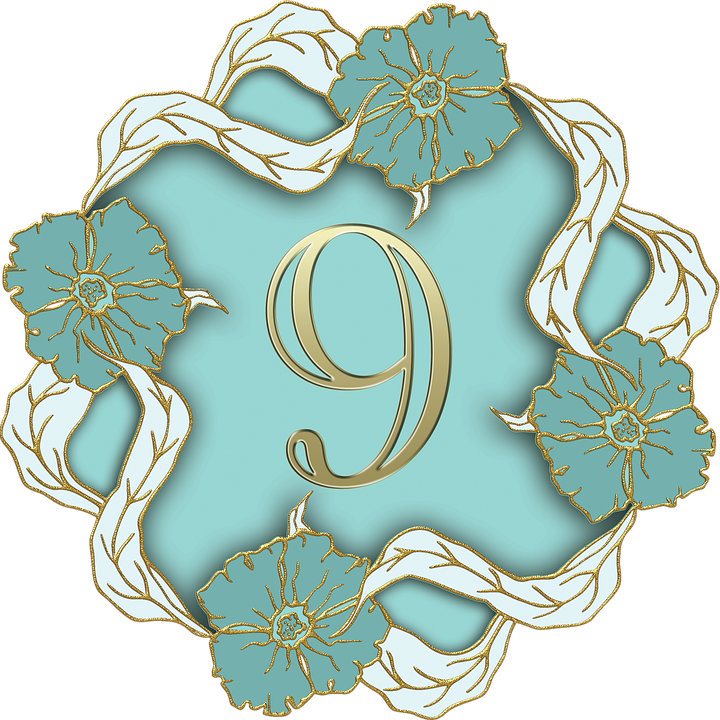
Top 9 Artificial Topiary Trees For Home Decorating
How to have a topiary tree conversation?
Topiary trees can mean many things to many people. To have a relevant conversation for a topiary tree, you need to ask the questions. Questions such as a live, artificial, or preserved topiary so you have the species correct. Where will the topiary live, indoors or outdoors? Do you know the temperature hardiness range zone so the topiary can live outdoor or indoors? Who is the topiary artist? Once you have the basic questions answered, you can talk about an artificial topiary using the right vocabulary if that is your interest.Artificial topiary trees are a great decor addition to any home. They bring life and color into your space, but don’t require the intensive maintenance of a real topiary tree. You can get very creative with your topiary trees, as they are available in so many different shapes and sizes. Depending on your interior decorating style, your topiaries can add a touch of whimsy and fun, or they can make the space feel more sophisticated.
With so many different types of topiaries out there, it can be difficult to choose the right shape for your space. Here are 9 of our favorite artificial topiary shapes to use for home decorating.
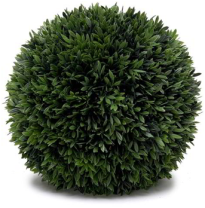
1. Ball Topiary
A ball topiary is a simple, classic option that is very versatile. Artificial ball topiaries are made to resemble a number of different plants, so you can choose the style that you prefer for your home. Faux boxwood is one of the most popular options for ball topiaries, but you can also find artificial ball topiaries that are made to resemble other plants, such as ivy or cedar. Since ball topiaries are very compact, they are great for small apartments or any room where you don’t have much additional space for a plant.

2. Double Ball Topiary
If you like the shape of ball topiaries and have more space to work with, you may want to consider a double ball topiary. These topiaries have two round plant shapes stacked on top of each other, connected by branches. These artificial plants look nice in the corner of a room or in an entrance hall. They look very sophisticated and go well with many different styles of interior decorating. If you want an option that’s slightly taller, you can also opt for a triple ball topiary. Many triple ball topiaries have balls that are different sizes, with the largest ball on the bottom and smaller balls on the top for an eye-pleasing gradient. Double ball topiary are most popular for store fronts.

3. Spiral Topiary
A spiral topiary is another very sophisticated option that is sure to catch the eye of any guests that visit your home. The spiral shape is very unique and bring a sense of elegance to your space. Since spiral topiaries are typically very tall, they look great in rooms with high ceilings as well as outdoors in your front lawn or on your porch. For an even more unique topiary, look for a double spiral or helix shape. These topiaries are a dramatic twist on the original spiral and are a great way to switch things up.

4. Faux Tree Topiaries
Of course, sometimes you just want your artificial topiary trees to mimic the look and feel of a natural plant. There are many artificial topiaries that are built to look just like small trees, such as a cedar, olive tree, or cyprus. These trees have a rustic, natural look, and they don’t require any of the maintenance that a real tree would require. They are understated but are still a great way to bring life into your room.
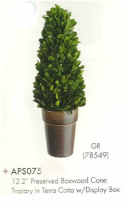
5. Cone Topiary
A cone topiary is a long, thin topiary that has a wide, round base and comes to a point at the top. Like spiral topiaries, cone topiaries are great for spaces with high ceilings or outdoor areas. Their unique geometric shape gives them a modern feel, making them a great option for anyone who wants to stand out. Depending on how they are styled, they can have a very whimsical feel.

6. Floral Topiary
If you enjoy the look of having flowers in your home, but don’t want the hassle of caring for them, you may want to consider a floral topiary. Floral topiaries are typically done in a ball shape, although they can be made in other shapes as well to look more natural. They feature brightly colored faux flowers that immediately add life to any space. These stunning topiaries have a very dramatic look, and they can serve as a pop of color in an otherwise neutral room.
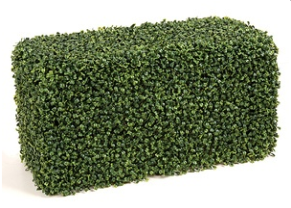
7. Square/Hedge Topiaries
Square topiaries are sure to stand out in any room, and make for a great addition to your space. A square topiary has a bold, geometric look that is fun and modern. The sharp lines of a square topiary make it a true statement piece. You can also opt for a rectangular or hedge topiary, which are very popular for outdoor use. Hedge topiaries are effective for obstructing views and creating a sense of privacy. Small hedge topiaries can also look very nice in window boxes.
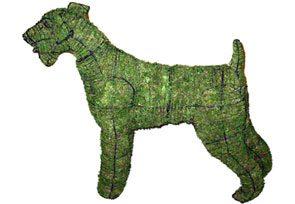
8. Animal Topiary
For something truly eye-catching, you can add an artificial animal topiary to your home. These topiaries typically need to be custom made, but they are a true statement piece that will last for a long time. Some popular options for animal topiaries include elephants, dogs, lions, and birds, although they can be made in virtually any shape. While animal topiaries are usually very large and are built for outdoor use, they can also be used indoors. Animal topiaries will usually act as the focal point of any space because they are so unique.
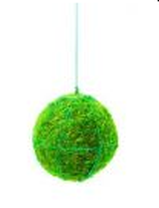
9. Hanging Topiary
Another fun addition to your home is a hanging topiary. These topiaries usually come in a ball shape, and are designed to be hung from a fixed point on the wall or ceiling, instead of planted in a pot. These topiaries are great for adding some dimension to your space. They work well in apartments and other small spaces.
What are the benefits of artificial topiaries?
There are a number of benefits to using artificial topiaries instead of real ones. The biggest benefit of artificial topiaries is that they require a lot less maintenance than real topiaries. When you purchase an artificial topiary, it is crafted by an expert and is easily shipped to you. Because artificial materials are so much less sensitive than real plants, an artificial topiary is much easier to shape. You also won’t have to worry about damage during the shipping process.
Once your topiary arrives, you can place it anywhere in your home, without worrying about whether or not it will get enough sunlight. You also won’t have to worry about watering or trimming your topiary regularly. While live topiaries need regular trimming to avoid excess growth, artificial topiaries will maintain their shape. Artificial topiaries are a great option for anyone who enjoys the look and feel of having plants in their home, but does not have the time to keep a living topiary healthy and trimmed.
Artificial topiaries are also designed to look very realistic. These aren’t the cheap plastic plants you would find at the supermarket — they are built from high quality fabrics and other materials to mimic the shape, color, and texture of a real plant. Artificial topiaries give you a realistic look without the hassle of a real topiary. They are also much more durable than live topiaries. A living topiary is sensitive to changes in sunlight and needs a regular watering schedule. Without meticulous care, a live topiary can have a very short lifespan. Artificial topiaries, on the other hand, can last for years and only require the occasional dusting. This means that artificial topiaries provide much more value for money.
Artificial Topiary Decorating Tips
There are so many different ways to decorate with topiaries in your home. In order for your topiaries to really make an impact, it’s important to consider where you place them and how they complement the other items in your home. A good way to do this is by experimenting with symmetry and asymmetry. Many people like to have two topiaries on either side of a room or hallway, as they balance each other out. However, if you like a more eclectic look, you may opt to put several small topiaries of different heights on a table, and balance them with other objects like photos, coffee table books, and artwork.
It’s important to make sure that your topiary is appropriately sized for your space. For example, if you want to put topiaries in your foyer or a very large living room, you can opt for something large and eye-catching to fill out the room. However, the same topiaries may look completely overpowering in a small space. If you’re opting for a statement topiary, such as an animal, it’s helpful to let that topiary serve as a focal point and keep other decor pieces subtle to balance things out.
If you’re using multiple topiaries in your space, make sure they tie together cohesively. While they don’t all need to be the same, it can look odd if the color and shape of the topiaries are dramatically different. It’s important to ensure that these topiaries have some features in common so that they tie the whole space together.
Artificial topiaries are fun and versatile decor pieces that can work well in any home. They have the appeal of a real plant, but they don’t require the extra care and maintenance.
3. Secure your wire frame over the pot where you want the plant to go. Once the frame is secure, you’ll need to get the plant to grow in the shape of the topiary. Usually you can do this just by winding the stem of the plant around the wire. However, in some cases, you’ll need to use an additional thin florist’s wire to further secure the plant. Once the plant starts growing around the topiary, you’ll need to prune it to ensure that it continues to grow and maintains its shape. If you are using artificial plants, you’ll need to be a bit more exacting when attaching them to the frame. However, you won’t need to worry about pruning the plants once you’ve got them in the right position.
Ideally, you should use a plant that has relatively small leaves for your topiary. Plants with small leaves are much easier to train into specific shapes, and they create a nice uniform look. Holly, boxwood, and ivy are all popular choices - check to see which option will do best in your climate for topiary trees. Topiaries are a great addition to your home, whether it’s a small indoor plant or a large outdoor tree. You can also make your own wire topiary frames for your office, which is a good alternative to expensive commercial topiaries.
Featured Image Credit: ractapopulous / Pixabay